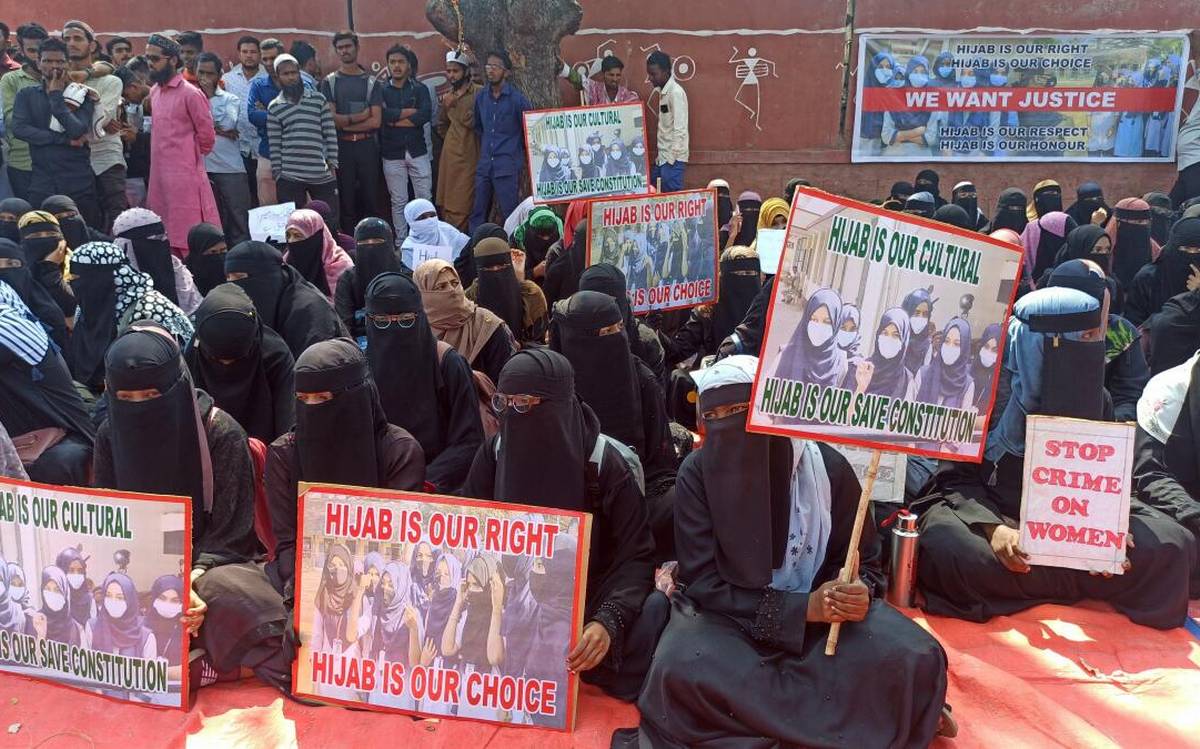The Hijab controversy that erupted from the coastal area of Karnataka seems to have become a major political issue all over the country with activists taking rigid positions that would complicate matters even further. The row has been kicked up when the poll process for Assembly polls in five states has commenced and is helping divisive forces on both sides to consolidate their vote bases. It has been an age-old practice in many parts of the country where women belonging to all faiths, cover their heads because of the prevalent social customs. Having studied in Zakir Hussain Delhi College, which had a sizable Muslim presence, I do recall that first-generation Muslim girls from the walled city, who were students, would arrive at the College premises clad in Burqas since they would not have been permitted to travel without it, to acquire higher education by their orthodox parents. However, once inside the Gate, they would take off their Burqas in a room meant for this purpose and enter the premises in their Salwar Kameez or any other attire. They would attend all their classes and spend free time in the Girl’s common room or in their departments or classrooms.
While going back home, they would wear the Burqa at the Gate itself and return, only to be back in a similar fashion the following day. The underlying point was that inside the portals of this college, which is perhaps the oldest educational institution in North India, the Burqa was not permitted even though a majority of Principals were from the same faith and had a wider understanding of how students should conduct themselves. The Burqa or hijab was never an issue that was objected to by anyone and even the parents of the girls who attended college accepted this norm. What seems to be happening is that the row has been kicked up because the matter has assumed religious overtones. There is no bar if the girl students arrive wearing a Hijab and once inside the precincts of an educational institution, they must adhere to the prescribed uniform code. Where no such dress restrictions exist, there should be no problem whether anyone is wearing any sort of headgear. Parallels are being drawn regarding the turbans worn by Sikh boys in schools. In virtually every school, the Sikhs are allowed to wear the turban which matches the colour of the uniform and no controversy has ever arisen regarding this. In rural India, in many parts women belonging to every faith, not only cover their heads but their faces also. This is a social custom even if it is gender-specific.
Any woman who defies this faces a possible social boycott and condemnation. This practice may go against the individual rights of a person but that is how the reality is at the ground level. Of course, every person has the right to choose his or her attire but in an educational institution, one has to follow the rules if such rules exist. It is not a mere coincidence that the Hijab row has erupted when the Assembly polls are on and an attempt to polarize votes on basis of religion is sought to be made. Wearing the Hijab is a compulsion for many Muslim girls if they have to attend college. Otherwise, they would be deprived of education since their families may not permit them to step out of their homes without the headgear.
The matter has to be understood keeping in mind all the sensitivities that go with it and ABVP or other outfits which hold a contrary view should not make things difficult and ugly. Internationally, there is an accepted rule regarding travel norms. The photographs on the passport or Visas have to show a full frontal view of the face with the ears also being visible. Every individual follows this at the airports where authorities scrutinize travel documents. However, when women from West Asian countries in particular travel to say a place like London, they move around the streets with their Hijabs or Burqas after they are permitted to enter the country. In the liberal times we live in, such matters should not crop up and emphasis should be on larger issues that concern the better quality of life. Hopefully, the issue would be amicably sorted out by the judiciary and calm and peace shall be restored not only in Karnataka but other parts of India as well. It is much ado about nothing.







